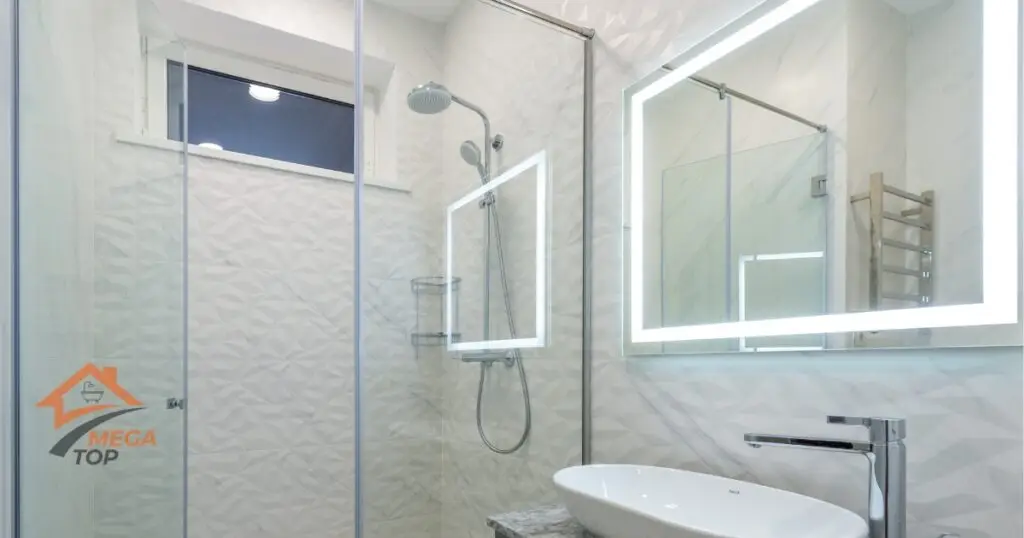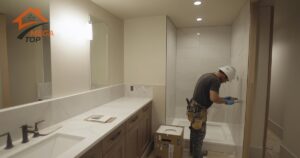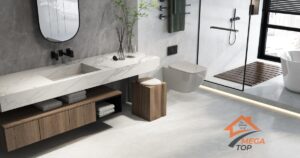How Waterproofing Protects Your Shower from Damage
Waterproofing your shower is essential to prevent water damage, mold growth, and structural deterioration. Showers are high-moisture environments, making them vulnerable to leaks that can penetrate walls, floors, and even substructures if not properly sealed. A reliable waterproofing system provides a protective barrier that keeps water from seeping into unintended areas, ensuring that your bathroom stays dry, mold-free, and in top condition.
Understanding the Key Methods of Shower Waterproofing
There are various methods to waterproof a shower, but the most effective ones involve membranes. These membranes act as an impermeable layer, protecting surfaces from water damage. The two main methods include the use of sheet membranes, which are pre-formed waterproof layers, and liquid membranes, which are applied directly to surfaces, forming a continuous protective layer. Each has its advantages, depending on the specific needs of your shower.
Benefits of Using a Waterproofing Shower Membrane
Long-Lasting Protection Against Leaks and Mold
Waterproofing shower membranes offer superior durability compared to traditional sealing methods like grout and caulk. Membranes create a more consistent barrier that resists water infiltration and prevents mold and mildew from developing. This level of protection ensures that your shower stays in pristine condition for years without the need for constant maintenance.
Compatibility with Various Shower Designs and Materials
Waterproofing membranes are versatile, working with various shower types, including tiled showers, fiberglass, and stone installations. Their adaptability makes them suitable for complex shower designs, niches, and even curved areas, providing complete coverage regardless of your shower’s shape or layout.
Types of Waterproofing Shower Membranes
Sheet Membranes: Why They Are a Top Choice
Sheet membranes are pre-formed layers that are applied to the surface of the shower walls and floors. These membranes are highly reliable because they ensure even coverage and reduce the risk of missed spots. They come in large rolls and are bonded with adhesive, providing a secure and watertight seal. Sheet membranes are popular for their durability and resistance to movement in the underlying structure, making them ideal for long-term use.
Liquid Membranes: Flexibility and Ease of Application
Liquid membranes are another effective option for waterproofing showers. These membranes are applied like paint, spreading a seamless layer of protection over the shower surface. They are perfect for irregular or hard-to-reach areas, ensuring every corner and crevice is covered. Liquid membranes are often chosen for their ease of use, making them a common choice for DIY enthusiasts or professionals working on intricate designs.
Foam Board Membranes: Durable and Easy-to-Install Option
Foam board membranes combine the benefits of insulation and waterproofing in one product. These lightweight boards are installed directly onto shower walls or floors, offering both a moisture barrier and additional thermal insulation. Foam board membranes are particularly effective in preventing moisture buildup behind tiles and are relatively simple to install.
Step-by-Step Guide to Applying a Waterproofing Shower Membrane
Preparing the Shower Surface for Waterproofing
Before applying any membrane, the shower surface must be clean, dry, and free from debris. It’s important to ensure that all cracks or gaps are sealed with appropriate filler material. Smooth surfaces allow membranes to adhere properly, ensuring that there are no weak points where water can infiltrate.
How to Apply Sheet Membranes Effectively
- Measure and cut the sheet membrane to fit the shower walls and floor.
- Apply a thin layer of adhesive on the surface.
- Carefully place the sheet membrane, pressing firmly to eliminate air bubbles.
- Overlap the membrane seams by a few inches to ensure there are no gaps.
Best Practices for Liquid Membrane Application
- Use a roller or brush to apply the liquid membrane evenly across the shower surface.
- Apply multiple coats, allowing each layer to dry completely before adding the next.
- Pay special attention to corners and edges, as these areas are most prone to leaks.
Tips for Ensuring Proper Adhesion and Coverage
Whether you’re using sheet or liquid membranes, ensuring complete coverage is crucial. Always double-check seams, corners, and areas around fixtures. Proper adhesion is key to a long-lasting waterproof barrier, so follow the manufacturer’s drying and curing times to prevent early water exposure.
Choosing the Best Waterproofing Membrane for Your Shower
Factors to Consider: Durability, Ease of Installation, and Cost
When choosing a waterproofing membrane, factors such as the shower’s design, your budget, and installation preferences should be considered. Sheet membranes provide a more foolproof solution with their consistent coverage, but they may require professional installation. Liquid membranes offer flexibility, especially in non-standard shower designs, but they require multiple layers for adequate protection.
Comparing Sheet vs. Liquid Membranes
Sheet membranes are known for their strength and ability to withstand movement in the building structure, making them a long-lasting option. Liquid membranes, on the other hand, are easier to apply and more affordable, but they may not provide the same level of durability in high-traffic showers.
Case Studies of Successful Waterproofing Installations
In one example, a tiled walk-in shower was protected with a sheet membrane, which held up to years of heavy use without any signs of water damage. Another project used a liquid membrane for a custom curved shower, ensuring that the difficult shape was fully waterproofed, proving the adaptability of liquid solutions.
Common Mistakes to Avoid in Shower Waterproofing
Failing to Cover All Areas Completely
One of the most common mistakes in waterproofing is leaving gaps or missing sections, especially around drains and corners. Water can easily seep into these areas, leading to damage over time.
Using Incompatible Materials or Adhesives
It’s important to use the correct materials and adhesives when installing a waterproofing membrane. Using incompatible products can result in poor adhesion, causing the membrane to fail.
Not Allowing Adequate Drying Time Between Steps
Rushing the installation process by not allowing each layer or adhesive to dry fully can compromise the integrity of the waterproof barrier. Always follow the recommended drying times for optimal results.
Signs Your Shower Needs Waterproofing
Water Damage or Mold Growth on Walls or Floors
Visible signs of mold or mildew, especially in the grout lines or on the walls, often indicate that water is seeping through. If left unchecked, these issues can lead to larger structural problems.
Cracks in Tiles or Grout
Cracked tiles or deteriorating grout can allow water to penetrate, indicating that your shower’s waterproofing is failing and needs immediate attention.
Damp Odors Coming from the Shower Area
Musty smells often signal hidden water damage. If your shower has a persistent odor, it could be a sign that water is leaking into the walls or subfloor.
How Professionals Ensure a Properly Waterproofed Shower
Expert Knowledge of Material Compatibility and Installation
Professional installers have the expertise to select the best waterproofing membrane for your specific shower and apply it correctly. They know which adhesives and materials are compatible, ensuring that the membrane forms a secure, watertight seal.
Ensuring Complete Coverage and Leak Prevention
Experts follow stringent procedures to ensure that every inch of your shower is protected, from the walls to the floor and even around fixtures. This attention to detail helps prevent future leaks and costly repairs.
Compare DIY vs. Professional Shower Waterproofing
The Downsides of DIY Waterproofing
- Inconsistent Application Leading to Leaks: DIY waterproofing projects often result in uneven coverage, increasing the risk of leaks.
- Lack of Knowledge About Proper Materials and Methods: Many DIYers are unaware of the best practices for installing membranes, which can lead to early failure of the waterproofing system.
Advantages of Hiring a Professional
- Experience Ensures a Leak-Proof Finish: Professionals have the experience and tools needed to ensure a completely waterproof shower, reducing the risk of future problems.
- Long-Term Peace of Mind and Fewer Future Repairs: Hiring a professional guarantees that your shower will be protected for years, preventing costly repairs down the road.
FAQ
Yes, using a waterproofing membrane is essential to prevent leaks and mold growth. Hiring a professional ensures that it’s applied correctly.
While it’s possible to install DIY, mistakes in application can lead to leaks and costly repairs. Hiring an expert is recommended for best results.
With proper installation, waterproofing membranes can last 10-15 years or more. Professional installation ensures maximum lifespan.
Sheet membranes provide a more consistent barrier, while liquid membranes are easier to apply in irregular spaces. Experts can help determine the best option for your shower.
Costs vary based on membrane type and shower size, but hiring a professional guarantees quality results and long-term savings.





